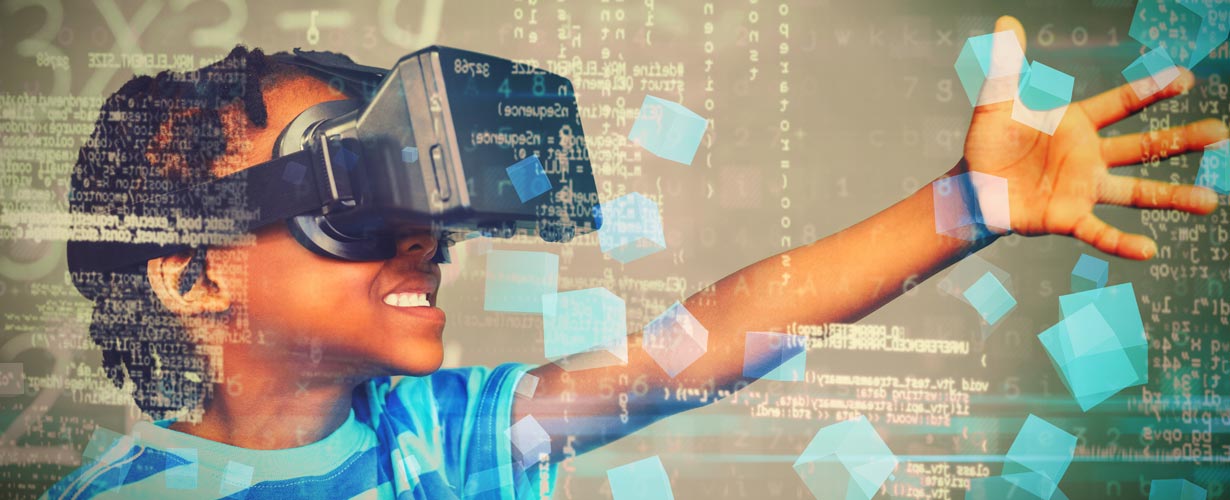Virtual reality
The world we experience through our senses such as touch, sight, smell, taste, and sound is the real world. However, technology has created a new world known as the virtual world or virtual reality, where users can experience a computer-generated environment as if it were real.
Virtual reality is a combination of two words, “virtual” and “real”, meaning it gives the user the experience of being in the real world. It consists of two components: software that creates the virtual environment and hardware such as headphones, controllers, glasses, seats, and HMDs, which allow the user to interact with the virtual world.
Initially, virtual reality was mainly used in video games, but with the advancement of 3D graphics technology, it has now found applications in movies and other industries. The history of virtual reality dates back to the 1950s when scientists first created 3D graphics. In 1957, Morton Heiling created the Sensorama machine, which allowed users to watch 3D movies. The Sensorama laid the foundation for modern VR headsets and is considered a milestone in the development of VR technology.
Virtual reality has many practical uses such as in the training of the American army and NASA, flight simulators, teaching car driving, and medical training. It provides a safe and controlled environment for students to learn and practice handling difficult situations.
Currently, virtual reality primarily engages the senses of sight and hearing, but as technology continues to improve, it is possible that in the future, users will also be able to experience virtual reality through taste, smell, and touch.
Augmented reality
The history of Augmented Reality (AR) is relatively new compared to Virtual Reality (VR). AR gained popularity with the advent of smartphones and AR applications. Snapchat and Instagram’s fun filters are examples of AR. Unlike VR, AR does not create a virtual world but instead superimposes digital information or graphics onto the real world. AR is created through the use of cameras, sensors, and software. One of the most popular examples of AR is the Pokemon Go game that took the world by storm.
One of the early uses of AR was the heads-up display on fighter jets that allowed pilots to see crucial information projected on their windshields. Michael Jackson’s holographic concert also showcased AR. Google Lens is another example of AR. Companies are increasingly incorporating AR in their apps to help customers visualize how a product would look on them or in their rooms before making a purchase. AR is a combination of the real and virtual worlds.
As technology advances, VR and AR devices are becoming more portable and accessible, enabling users to experience these technologies almost anywhere.
Virtual and augmented reality: The Future of User Experience
Virtual and Augmented Reality are poised to revolutionize the way we interact with technology and the world around us. While today their applications are limited to select industries, it won’t be long until VR and AR are integrated into nearly every aspect of our lives, from homes to schools, businesses, and public spaces. The convergence of these technologies promises to deliver a level of user experience like never before.
Education
VR and AR can transport students on a journey through the cosmos, providing hands-on, interactive lessons on astronomy and the laws of physics. Teachers can also take students back in time with the help of VR and AR, to witness key historical events and engage with ancient creatures like dinosaurs. The possibilities for education are endless and exciting.
Real Estate
Potential buyers can take virtual tours of properties before making a purchase, giving them a clear idea of what their new home will look like and how it fits into the surrounding neighbourhood.
Music Industry
Pop stars can perform virtual concerts that can be watched by hundreds of thousands of fans. These events can even allow for interactive experiences between the performer and the audience.
Advertising
Advertising agencies can leverage AI and VR to create cutting-edge marketing campaigns that allow users to try on virtual clothes or experience a product before making a purchase. Companies are already taking advantage of AR in their apps to showcase how their products will look in a customer’s home.
Film Industry
VR and AR technology can bring fan-favourite actors back to the screen, blurring the line between reality and virtuality. This opens up exciting new possibilities for movie directors and fans alike.
Business World
Virtual and Augmented Reality has the potential to bring about a revolution in the manner in which we conduct meetings. By making them more immersive and effective, VR and AR have the power to surpass the limitations of video conferencing. As the technology behind VR and AR continues to advance, business professionals will be able to interact with one another as though they were in the same room. This not only applies to meetings but has the potential to impact other business activities as well through the use of VR and AR technology.
End note
As technology continues to evolve and advance, we can expect to see the creation of virtual worlds that closely mimic the laws of the universe. These worlds will become so realistic that it will be difficult to distinguish between the virtual and the real. The advancements and improvements in technology will result in a vastly enhanced user experience. In the future, the potential for technology to blur the line between reality and virtuality will only continue to grow. This will significantly enhance the experiences of those who use these technologies.

